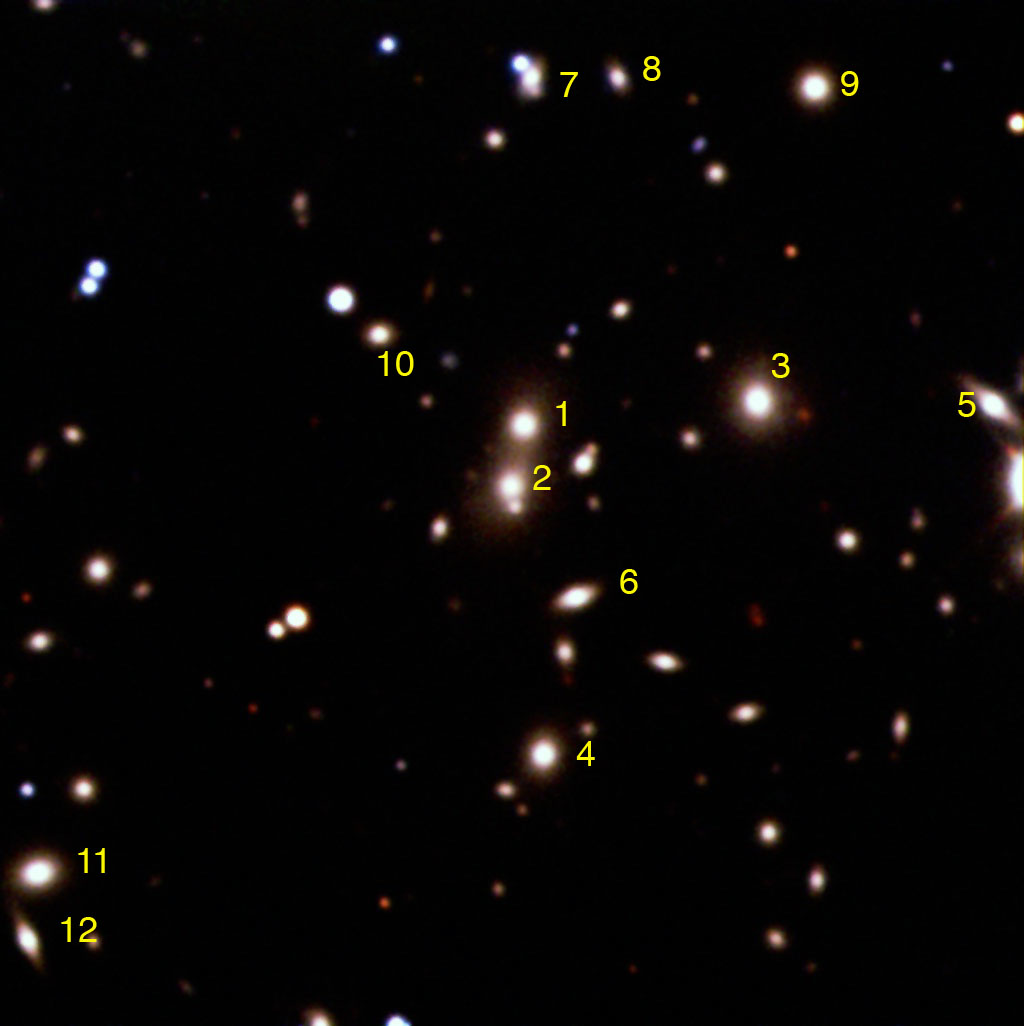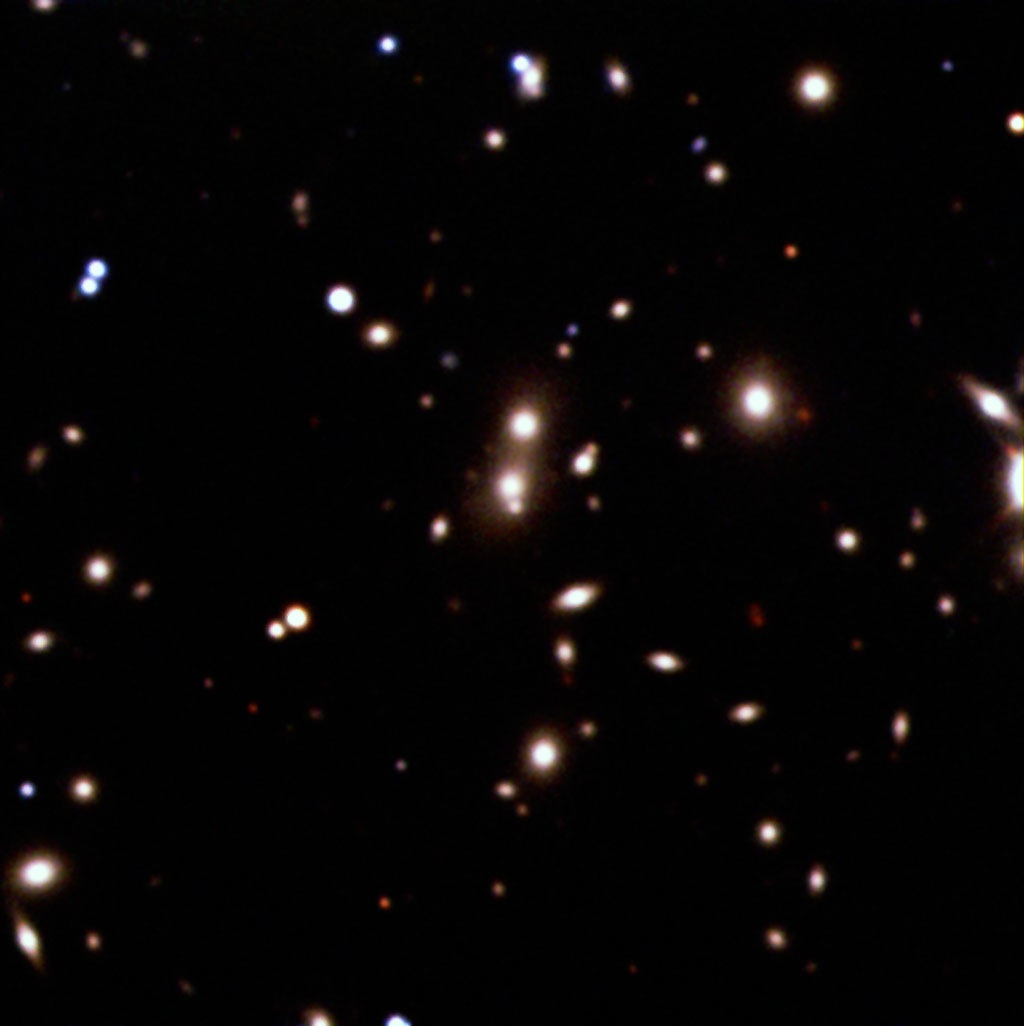-
Faulkes Telescope Project Privacy Policy
Is this the most galaxies imaged in one go with Faulkes?!
Oliver Tunnah, a regular user of the FTs took this great image of the distant galaxy cluster Abell 2065 during one session on FTS. Here is his account of how he imaged this cluster nearly 940 million light years away.
“Before hand I didn’t have any of the galaxy numbers. (This object is faint and is very challenging visually. There isn’t that much about it on the internet compared to other galaxy clusters.) I used Google Sky to get the co-ordinates. I framed it so that the bright star is out of view. (If you’re wondering, 4.6 arc mins roughly equates to a 4′ 15” FOV in Google sky.) This also allowed me to get the central part of the cluster nicely.
Because it was quite faint I decided to take three 120 second exposures. But faint compact targets are what the FT’s excel at, see my IC 466 as proof. Three exposures equate to 360 mins in each filter. Taking three allows me to get a longer exposure and reduce noise (which seems to be creeping back in with the scopes, FTS in particular.) I added three red images together and did the same for Green and Blue before combining them to make the RGB image.
I was drawn to this cluster by an article in Astronomy Magazine (I subscribe to this one and not Astronomy now) about galaxy clusters. Me, liking multiple galaxies in an image, especially if they are crashing, couldn’t resist.
 Many clusters are quite spread out and require mosaics to get even a few members. But Abell 2065 stood out. It does stretch a mighty 40′ north to south and 30′ East to West but most of the galaxies occupy a central 15′ (or one full Moon width.) However I got more than 50 galaxies in just one image. A number of these are listed below and labelled in the image. ”
Many clusters are quite spread out and require mosaics to get even a few members. But Abell 2065 stood out. It does stretch a mighty 40′ north to south and 30′ East to West but most of the galaxies occupy a central 15′ (or one full Moon width.) However I got more than 50 galaxies in just one image. A number of these are listed below and labelled in the image. ”
1:PGC 54888
2:PGC 54883
3:PGC 84576
4:PGC 54884
5:PGC 54869
6:PGC 54881
7:PGC 1816776
8:MAPS-NGP 0-328-0332012
9:PGC 84875
10:PGC 1816164
11:PGC 54891
12:PGC 54890
For more images of the Abell 2065 cluster, click here to go to the SDSS Navigate tool. From this you can click on any of the Abell cluster objects in the field and obtain more information about them and better resolution images.
Posted in Societies

